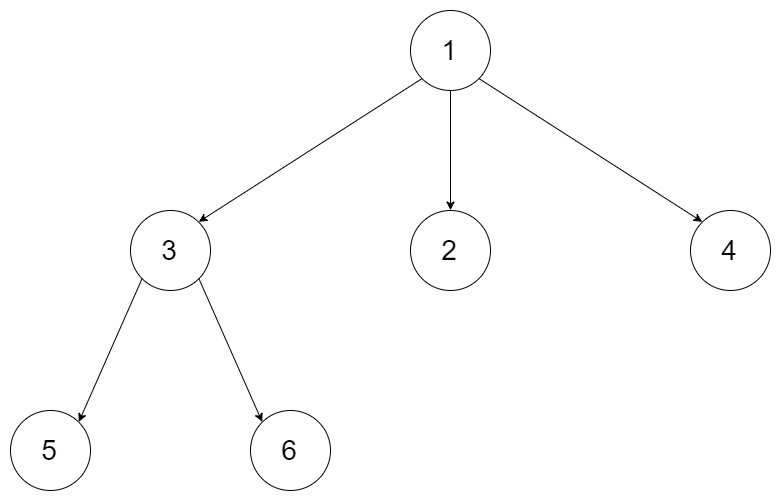Given an n-ary tree, return the level order traversal of its nodes' values. (ie, from left to right, level by level).
For example, given a 3-ary tree:

We should return its level order traversal:
[
[1],
[3,2,4],
[5,6]
]
Note:
- The depth of the tree is at most
1000. - The total number of nodes is at most
5000.
/*
// Definition for a Node.
class Node {
public:
int val;
vector<Node*> children;
Node() {}
Node(int _val, vector<Node*> _children) {
val = _val;
children = _children;
}
};
*/
class Solution {
public:
vector<vector<int>> levelOrder(Node* root) {
vector<vector<int>>ans;
if(!root){
return ans;
}
int depth=0,i,j,n;
queue<Node*>q;
q.push(root);
while(!q.empty()){
vector<int>a;
n=q.size();
for(i=0;i<n;i++){
Node* head=q.front();
q.pop();
a.push_back(head->val);
for(j=0;j<head->children.size();j++){
q.push(head->children[j]);
}
}
ans.push_back(a);
}
return ans;
}
};递归:
/*
// Definition for a Node.
class Node {
public:
int val;
vector<Node*> children;
Node() {}
Node(int _val, vector<Node*> _children) {
val = _val;
children = _children;
}
};
*/
class Solution {
public:
vector<vector<int>>ans;
vector<vector<int>> levelOrder(Node* root) {
if(!root){
return ans;
}
queue<Node*>q;
q.push(root);
bfs(q);
return ans;
}
void bfs(queue<Node*>q){
if(q.empty()){
return;
}
queue<Node*>nextq;
vector<int>a;
int i;
while(!q.empty()){
Node* head=q.front();
q.pop();
a.push_back(head->val);
for(i=0;i<head->children.size();i++){
nextq.push(head->children[i]);
}
}
ans.push_back(a);
bfs(nextq);
}
};迭代:
/*
// Definition for a Node.
class Node {
public:
int val;
vector<Node*> children;
Node() {}
Node(int _val, vector<Node*> _children) {
val = _val;
children = _children;
}
};
*/
class Solution {
public:
vector<vector<int>>ans;
vector<vector<int>> levelOrder(Node* root) {
if(!root){
return ans;
}
queue<Node*>q;
q.push(root);
bfs(q);
return ans;
}
void bfs(queue<Node*>q){
if(q.empty()){
return;
}
while(!q.empty()){
queue<Node*>nextq;
vector<int>a;
int i;
while(!q.empty()){
Node* head=q.front();
q.pop();
a.push_back(head->val);
for(i=0;i<head->children.size();i++){
nextq.push(head->children[i]);
}
}
ans.push_back(a);
q=nextq;
}
}
};








 博客围绕N叉树的层序遍历展开,要求返回节点值的层序遍历结果,即从左到右、逐层输出。还提到树的深度和节点总数有一定限制,同时给出递归和迭代两种思路的参考。
博客围绕N叉树的层序遍历展开,要求返回节点值的层序遍历结果,即从左到右、逐层输出。还提到树的深度和节点总数有一定限制,同时给出递归和迭代两种思路的参考。
















 253
253

 被折叠的 条评论
为什么被折叠?
被折叠的 条评论
为什么被折叠?








